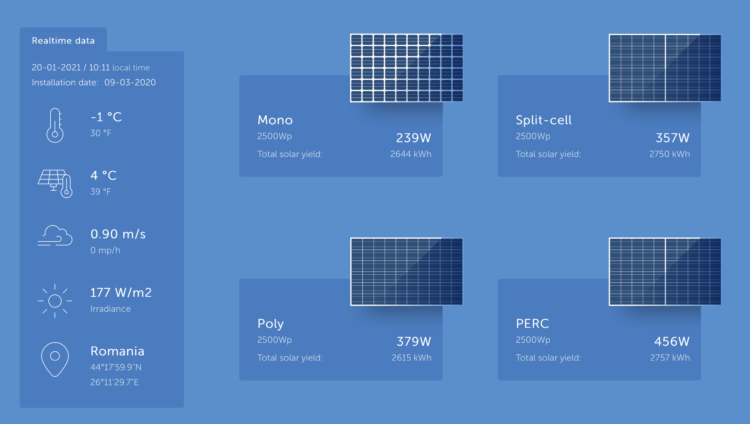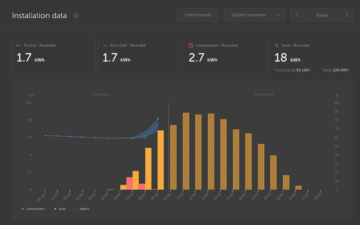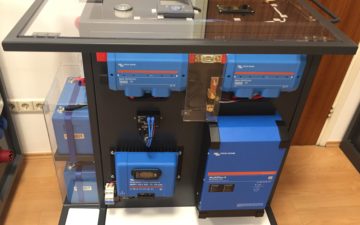
Ever wondered which type of PV panel offers the best output?
We wondered that too! So we decided to carry out our own impartial test.
Don’t worry, we’re not setting out to prove that Victron Panels are best or anything like that. We thought it would be interesting to compare Monocrystalline cells with Polycrystalline; Passivated Emitter and Rear Cell (PERC) panels; and ‘Split-Cell’ panels – which are wired to reduce hot spots and increase efficiency.
So we installed those four types of array, outdoors, making sure the installations were identical in every way:
they’re in the same location (obviously!)
they have the same length of cabling;
they’re connected to identical MPPT solar chargers
panel output is mathematically re-calculated to show results as if each array had a 2500Wp
The test has been running for six months and will continue indefinitely. You can view the live data, and see the total power harvest which has accumulated over time.
By way of an example here’s a snap-shot comparison for one moment in time: When the monos were producing 1430 Watts, this was the live comparison:
- Monocrystalline = 1430W
- Polycrystalline = 1366W
- PERC = 1427W
- Split Cell = 1439
What makes the experiment interesting is that different panels offer their best performance under different weather conditions. Local ‘live’ meteorological conditions are reported alongside the panel readings.
At the time of writing, in the Northern Hemisphere, we are coming into our winter. Clear cold winter days of brilliant sunshine are great for harvesting solar energy – so let’s see what happens!
To see live data from our test go to the Victron Energy homepage and click on Field Test – which you’ll find top left of screen, on the site-map black-strip. (Field Test cannot yet be viewed on mobile phones.)
Take a look at this video to see how our 4 panel arrays were set up for comparison-testing, and how the results can be compared.









